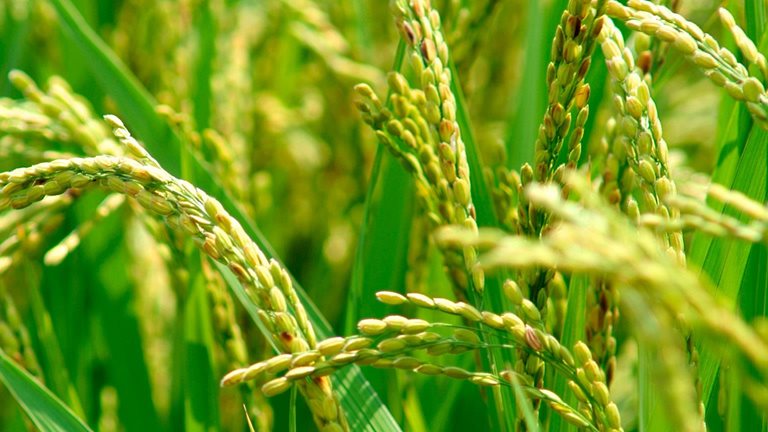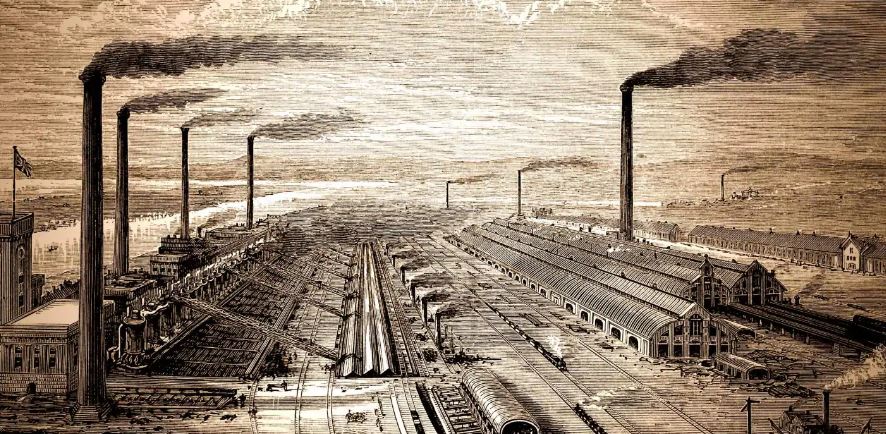Table of Contents
The meaning of Green Revolution may be taken as, the adoption and diffusion of new seeds of wheat and rice has been considered as a significant achievement as it offered great optimism. In fact, these varieties of seeds have revolutionised the agricultural landscape of the developing countries and the problem of food shortage has been reduced.
- “Civilization as it is known today could not have evolved, nor can it survive, without an adequate food supply.” – by Norman Borlaug (Father of Green Revolution in the world)
- “Almost certainly, however, the first essential component of social justice is adequate food for all mankind” – by Norman Borlaug (Father of Green Revolution in the world)
Merits of the High Yielding Varieties (seeds)
-
Shorter Life Cycle
-
Economise on Irrigation Water
-
Generate more Employment
-
Easy to Adopt
-
New seeds are less resistant to droughts and floods and need an efficient management of water, chemical fertilisers, insecticides and pesticides
When the new seeds were diffused in the mid-sixties, it was expected that the problems of food shortage, unemployment, poverty, hunger, malnutrition, undernourishment, and regional inequalities will be largely solved. But these objectives could not be fully achieved.
- Geographical Constraints- Soil fertility decreases; sugarcane,wheat and rice are soil exhaustive crop; rotation of crops decreases ,practice of fallowing (not planted trees in order to increase fertility to soil) abandoned.
Environmental and Ecological Implications of Green Revolution | UPSC – IAS
Environmental and ecological problems that emerged out of the cultivation of the High Yielding Varieties are
-
Depletion of forests, Deforestation
-
Salinization,
-
Water-logging,
-
Depletion of underground water-table,
-
Soil erosion,
-
Decline in soil fertility, (pollution)
-
Health hazards
-
Noise Pollution
Salinization
- The continuous supply of moisture through irrigation during the summer and winter seasons have changed the soil chemistry. In the arid and semi-arid areas, owing to capillary action, the soils are becoming either acidic or alkaline.
- The saline and alkaline affected tracts, locally known as kallar or thur in Punjab and kallar or reh in Uttar Pradesh have expanded and increased in area
- According to one estimate, about 50 percent of the total arable land of Punjab and Haryana has been harmed by soluble salts.
Solution of salinization
- The problem of salinity and alkalinity can be solved by use of manure (cow-dung, compost, and green manure) and by a judicious selection of leguminous crops in the crop rotation.
- Cultivation of salt tolerant crops like barley, sugar-beet, salt grass, asparagus, spinach , and tomato may also help to a great extent and may improve the fertility of such lands.
Waterlogging
- Water-logging is the other major problem associated with over-irrigation . In all the canal irrigated areas of Punjab, Haryana, and western Uttar Pradesh, water-logging is a serious problem.
For Example:-
- The Indira Gandhi Canal command area is a recent example in which water-logging is progressively becoming a serious menace to the arable land several thousand acres of productive agricultural land and pastures in the districts of Ganganagar, Bikaner, and jaisalmer (Rajasthan) have been submerged under water
- progressive and ambitious cultivators of the irrigated areas of these districts have changed their cropping patterns and have introduced rice and wheat in place of bajra, pulses, cotton , and fodder. Repeated irrigation of these crops in the summer and winter seasons have resulted into waterlogged condition, especially along the canals.
Soil Erosion
- Soil erosion is a universal phenomena. It may be observed to some extent in all parts of the country, its intensity, however, is more in the arid, semi-arid, and mountainous areas.
- The presence of forests reduces the danger of soil erosion significantly. In recent years, the agricultural area has been expanded by indiscriminate felling of trees. The increase in the rate of soil erosion is not only damaging the agricultural lands, it is also affecting adversely the areas where the eroded soil is deposited.
Solution of Soil Erosion
- In order to minimize the danger of soil erosion, afforestation is imperative. Moreover, the farmers should apply more manures and develop windbreakers in the desert areas.
- Development of terraces in the hills, leveling of gullies, and contour ploughing in the hilly areas can also go a long way in reducing soil erosion.
Decline in soil fertility (Pollution)
- The High Yielding Varieties perform better if heavy doses of chemical fertiliser, insecticides, and pesticides are applied. Application of heavy doses, of these inputs destroy the micro-organisms which are so necessary to maintain the fertility of the soil.
Solution to overcome soil pollution
The use of manures in place of chemical fertilisers can go a long way in overcoming the problem of soil pollution
Lowering of the Underground Water-Table
- The High Yielding Varieties of rice and wheat are water-relishing crops. The continuous lifting of water through tube-wells and pumping sets has lowered the water Table in the eastern districts of Haryana.
- Many farmers have to lower their tube-wells in the years of inadequate monsoon rainfall. If the cropping pattern is not changed, and irrigation of rice and wheat continues at the present level, the underground water-table may not be sufficiently recharged and may get substantially depleted
- In opposition to this, the underground water-table in western Haryana is rising as there is a gypsum layer in that part of the state which does not permit the percolation of water through this layer the water-table in the Jhajjar District of Haryana has risen significantly.
- The crops of millets, bajra, arhar are damaged. In fact, people in this district pray for drought so that the waterlogged areas may be sown. Consequently, there are waterlogged conditions in several tracts in the western parts of Haryana. This rise in the water-table is resulting into capillary action, leading to the occurrence of saline and alkaline formations
Deforestation
- There had been heavy felling of trees to bring the forest area under cultivation. In Punjab and Haryana, less than 5 percent of their area is under forest. This is affecting the environment and ecology adversely.
Noise Pollution
- The change in the agricultural technology, the use of tractors, terracers, harvesters, threshers, and crushers have increased noise pollution which have disturbed the rural tranquility.
Health Hazards
- Application of heavy doses of insecticides, pesticides, and chemical fertilisers are health hazards. The application of these poisons on vegetables, fruits and grasses are health hazards.
- The Indian Council of Medical Research established that traces of lead, zinc and copper are found in the milk and vegetables on which the fertilisers, insecticides, and pesticides are sprayed.
- The recurrence of malaria in irrigated tracts of arid and semi-arid regions of Rajasthan and Punjab is the result of heavy irrigation and water-logged tracts along the canal which have become the breeding grounds for mosquitoes
Positive and Negative Impact of Green Revolution in india | UPSC – IAS
Green Revolution Achievements and Benefits
The diffusion of High Yielding Varieties has transformed the rural landscape. The main achievements of Green Revolution may be summarized as under:
-
The production and productivity of wheat, rice, maize, and bajra has increased substantially.
-
India has become almost self sufficient in the matter of staple foods.
-
The double cropped area has increased, thereby intensification of the Indian agriculture has increased.
-
In the areas where Green Revolution is a success, the farmers have moved from subsistence to market oriented economy, especially in Punjab, Haryana, western Uttar Pradesh, and the plain districts of Uttarakhand (Haridwar and udham singh nagar.
-
The adoption of High Yielding Varieties under the Green Revolution has generated more rural and urban employment.
-
Green Revolution has increased the income of farmers and landless labourers, especially that of the big farmers and the semi-skilled rural workers. Thus Green Revolution has increased rural prosperity.
-
Green Revolution has created jobs in the areas of biological (seed fertilisers) innovations, and repair of agricultural equipments and machinery.
Negative effects of Green Revolution & Problems and Prospects | UPSC – IAS
What are the major adverse effects of the green revolution?
Although the Green Revolution had several benefits, there were also some issues associated with this period that affected both the environment and society. The use of chemical fertilizers and synthetic herbicides and pesticides dramatically influenced the environment by increasing pollution and erosion
-
Depletion of soil owing to the continuous cultivation of soil exhaustive crops like rice and wheat.
-
Depletion of underground water table due to over-irrigation of more moisture requiring crops like rice and wheat.
-
Green Revolution has increased the income disparity amongst the farmers.
-
Green Revolution led to polarisation of the rural society. It has created three types of conflicts in the rural community, namely, between large and small farmers, between owner and tenant farmers, between the employers and employees on agricultural farms.
-
Green Revolution has displaced the agricultural labourers, leading to rural unemployment. The mechanical innovations like tractors have displaced the agricultural labour.
-
Agricultural production in the Green Revolution areas is either stationary or has shown declining trend.
-
Some valuable agricultural lands have submerged under water {water-logging) or are adversely affected by salinity and alkalinity.
-
Green Revolution is crop specific. It could not perform well in the case of pulses and oilseeds.
-
The traditional institution of Jajmani system has broken . Consequently, the barbers, carpenters, iron-smith, and watermen have migrated to the urban areas.
-
The soil texture, structure, soil chemistry, and soil fertility have changed.
-
About 60 per cent of agricultural land in the country remains unaffected by Green Revolution.
-
Green Revolution technologies are scale neutral but not resource neutral.
-
Punjab feeds the nation but farmers in the state, especially in the Malwa region fall prey to cancer. They take ‘Cancer Train’ to Bikaner for cheap treatment. ( due to pesticide use & growing pollution)
Second Green Revolution (2.0) in India | UPSC – IAS
The overall production of the cereal and non-cereal crops has reached almost the plateau stage. The growth rate of agricultural sector is only about two per cent. Looking at the growing demand of agricultural produce, there is an urgent need for undertaking agriculture to a higher trajectory of four per cent annual growth rate. In order to achieve these objectives, various governments have undertaken important steps towards agricultural reforms.
- The Second Green Revolution is a change in agricultural production widely thought necessary to feed and sustain the growing population on Earth
- These reforms aim at efficient use of resources and conservation of soil, water and ecology on a sustainable basis, and in holistic framework.
The main objectives of the second Green Revolution are:
-
To raise agricultural productivity to promote food security
-
More emphasis on bio-technology
-
To promote sustainable agriculture
-
To become self sufficient in staple food, pulses, oil seeds, and industrial raw material
-
To increase the per-capita income of the farmers and to raise their standard of living.
-
The holistic framework, thus,must incorporate financing of rural infrastructure such as irrigation, roads and power.
The Eleventh Five-Year Plan has aptly highlighted such a holistic framework and suggested the following strategy to raise agricultural output:
-
Attention has to be focused on areas such as rainfed, drought-prone crops, and drought resistant crops, and those amenable to biotechnological application
-
Improving water management, rainwater harvesting, and watershed development.
-
Reclaiming degraded land and focusing on soil quality.
-
Bridging the knowledge gap through effective extension.
-
Diversifying into high value outputs, e.g. fruits, vegetables, flowers, herbs and spices, medicinal plants, bamboo, bio-diesel, but with adequate measures to ensure food security.
-
Providing easy access to credit at affordable rate of interest.
-
Improving the incentive structure and functioning of markets








Fantastic overview of Green Revolution it covers all its important facts including merits n demerits also.. .Thanku
Thanks !!
You have very interestingly covered the whole aspect of topic.
I frequently read yours article to clear my doubts.
Keep the good work high and keep writing.
.
.
Thankyou
Thanks !!
This is yours second article which i read . I find this comprehensive and you have very interesting.
Keep the good work high .
Keep writing.
.
.
Thankyou
Thanks monika !!
Excellent article. Covered all dimensions nicely. Thanks
Thank You 🙂
Thanks !!